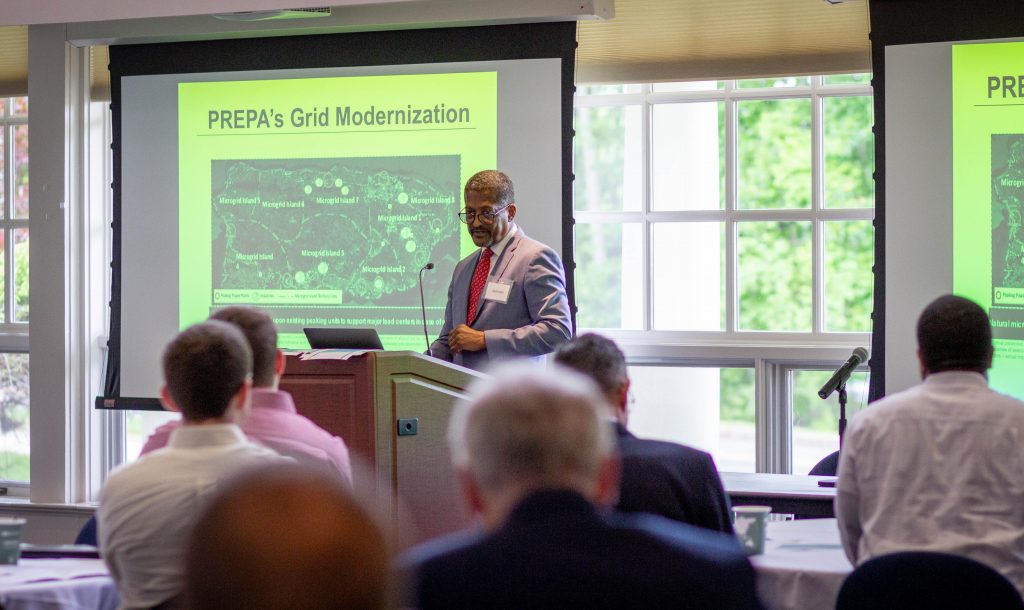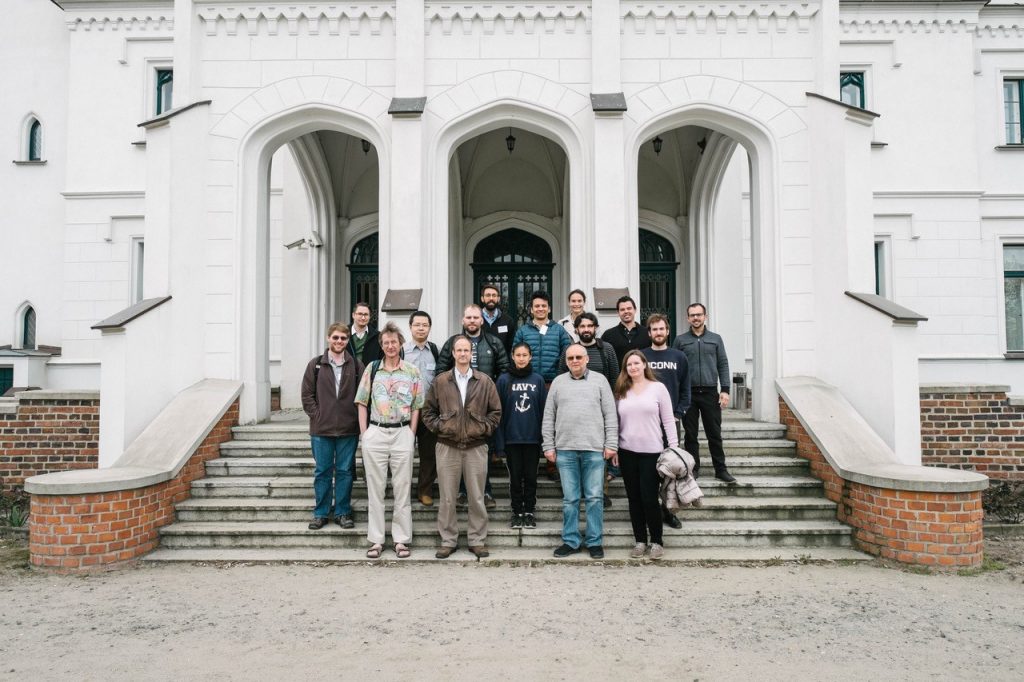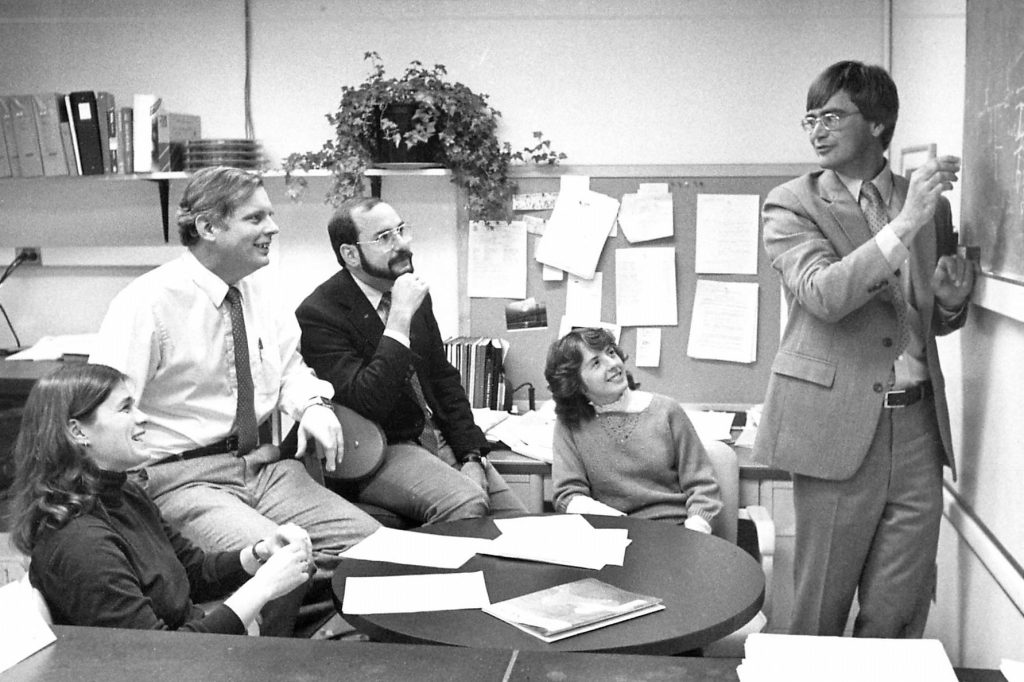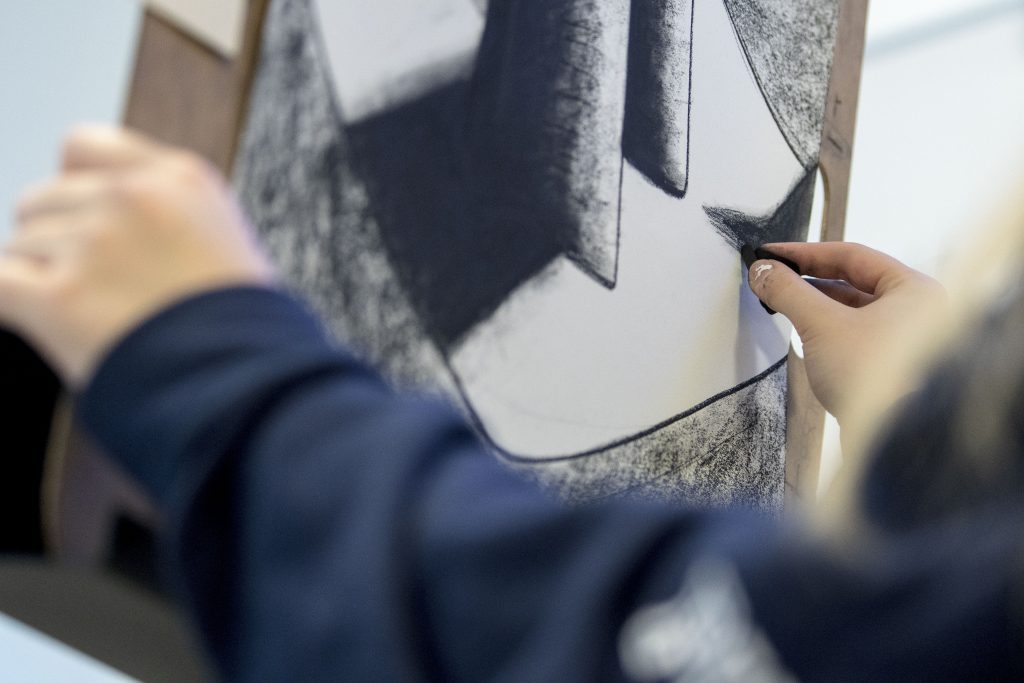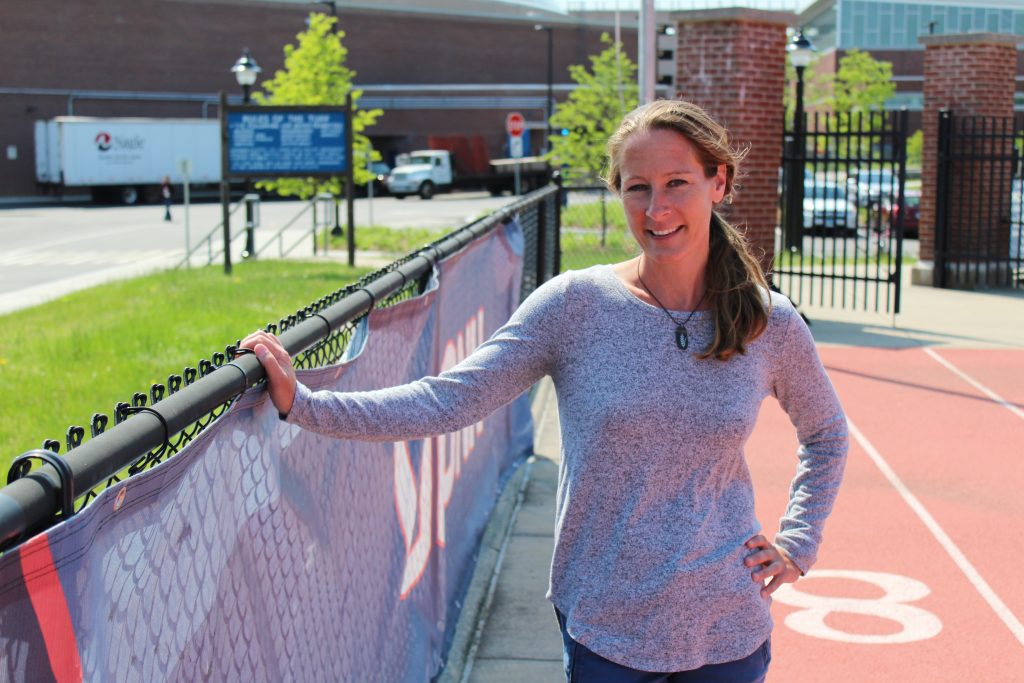Research & Discovery
Study: Yoga Breathing and Relaxation Lower Blood Pressure
Yoga practice that emphasizes mental relaxation and breathing can have as much of a beneficial impact on high blood pressure as aerobic exercise, according to research by a UConn postdoc.
June 19, 2019 | Kim Colavito Markesich
Smart Minds Talk about the Smart Grid
The Grid Modernization Summit held recently at UConn's Eversource Energy Center brought together industry leaders, regulators, and researchers to discuss how our new electricity needs – from electric vehicle charging stations to storm readiness in the face of climate change – tax our existing infrastructure and to begin to consider solutions.
June 18, 2019 | Jessica McBride, PhD
Common Antidepressants Increase Risk of Falls in Older Adults
Increased risk of falls in the elderly population is an unwanted side effect of many commonly prescribed antidepressants, say UConn pharmacy faculty.
June 18, 2019 | Elaina Hancock
Exploring the Role of Dads in Parenting
Family sciences professor Kari Adamsons discusses her research in areas that include parenting – particularly fathering – and its impacts on child development.
June 14, 2019 | Julie (Stagis) Bartucca '10 (BUS, CLAS), '19 MBA
Power in Numbers: NSF Grant Helps Researchers Attend International Mathematics Conference
UConn researcher, Vasileios Chousionis, won an NSF grant to help 15 US mathematical scientists travel to Poland for a prestigious conference of dynamics and related fields.
June 14, 2019 | Anna Zarra Aldrich '20 (CLAS), Office of the Vice President for Research
UConn’s Alcohol Research Center Continues Unprecedented Run
With its latest five-year, $7.5 million award from the National Institutes of Health, UConn Health's Alcohol Research Center remains the longest funded in the nation.
June 13, 2019 | Chris DeFrancesco '94 (CLAS)
Mobile Crisis Service Reduces Youth ER Visits for Behavioral Health Needs, Says Study
Youth served by Mobile Crisis had a 22 percent reduction in their rate of risk for subsequent emergency room visits during the 18 months following the intervention, according to the UConn study.
June 12, 2019 | Jaclyn Severance
OVPR Announces Inaugural Arts & Humanities Awards
OVPR SCHARP awards aim to support innovative works of scholarship and creative activities in the arts and humanities.
June 12, 2019 | Jessica McBride, PhD
Meet the Researcher: Beth Taylor, Kinesiology
Beth Taylor is a lifelong runner and she is someone who has been lucky enough to turn her passion for exercise and health in to a career in kinesiology. Taylor is an associate professor of kinesiology at the University of Connecticut and director of exercise physiology research in Cardiology at Hartford Hospital. After graduating from […]
June 10, 2019 | Anna Zarra Aldrich '20 (CLAS), Office of the Vice President for Research
Meet the Researcher: Beth Taylor, Kinesiology
Beth Taylor is a lifelong runner and she is someone who has been lucky enough to turn her passion for exercise and health in to a career in kinesiology. Taylor is an associate professor of kinesiology at the University of Connecticut and director of exercise physiology research in Cardiology at Hartford Hospital.
June 10, 2019 | Anna Zarra Aldrich '20 (CLAS), Office of the Vice President for Research

